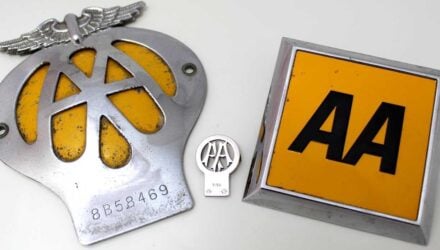 Vehicle fleet managers are at the vanguard of the movement to make the EU’s transport infrastructure more sustainable. According to research, 64% of fleet managers would go low-carbon today — right now — if they could*.
Vehicle fleet managers are at the vanguard of the movement to make the EU’s transport infrastructure more sustainable. According to research, 64% of fleet managers would go low-carbon today — right now — if they could*.
Here are three ways data can be leveraged to help fleet managers make the move to EVs and keep them on the road cost effectively.
Make it easy to connect EVs to the cloud
According to a 2018 report by non-profit Transport & Environment, in the EU there is now a ratio of five EVs for every charging point, and by 2020 there will be sufficient coverage of fast-charging points on European motorways to make long-distance travel viable**. But for fleet operators, simply getting more charge points on the ground is not enough on its own. They need to know exactly when to charge to get the best balance of price and range and to keep their vehicles moving.
The answer is to connect electric vehicles to the cloud. A cloud-connected EV can continually update its fleet systems with information about its charge state, its performance, its range, the expected time until it’s within the vicinity of charge points on its route and other important variables.
Using this information, systems can calculate — and dynamically recalculate as necessary — when and where each vehicle should next stop and charge. Using third-party data such as charging prices and traffic status, the fleet management platform can also route vehicles to the best-value charging point in their target re-charging area.
Build an intelligent vehicle-to-grid charging system
Vehicle-to-Grid (V2G) charging systems allow battery-powered vehicles to both buy power from the grid but also to sell it back as well. At any given time, 95% of vehicles are parked***. And unlike conventional vehicles, when they’re parked, EVs are connected to their fuel source.
During peak electricity times, the price of electricity rises above what the commercial vehicle owner paid for it. As soon as it does so, it’s profitable for the fleet operator to sell that electricity back to the grid, in order to help suppliers meet the spike in demand.
For this to happen, the parties involved must have accurate data on the following:
- The price at which each vehicle in the fleet bought its last charge (or the average price of the power bought over its last several charges)
- The price offered by the distribution network operator (DNO) during the spike and the probable price after the spike
- How much energy each vehicle can sell while still having enough time to top up its charge at a lower tariff before the start of the business day
Using programmatic trading and smart-contracts, enabled by blockchain authentication, fleet operators can automate these transactions for every vehicle they operate.
Not only will this turn their EV fleet into a new revenue stream, once it reaches mass adoption it will also help solve one of the key problems of switching the grid to renewables — how to store power for times when the wind isn’t blowing, or the sun shining.
Make vehicle-to-everything communication a reality
Vehicle-to-everything (V2X) communication is a short-range wireless communication system which allows a vehicle to communicate with moving and stationary components of the traffic system around it.
For instance, a car might communicate with other vehicles around it to gain early warning of a traffic jam ahead, or that the vehicle ahead is braking. Equally, however, the vehicle might communicate with traffic lights, toll collection points or other traffic control functions, working to maximise efficiency, compliance and driver wellbeing.
V2X technology can also help drivers save power and increase the range of their EVs. According to research by the Karlsruhe Institute of Technology, V2X can help EVs reduce energy consumption by up to 20%****. This works because traffic signals give cars a warning they are about to change, allowing the driver or the automated vehicle-control systems to react sooner, adjusting driving style to save fuel.
These are just three of the data technologies that will not only make the switch to EVs economical for fleet operators, but can also help to make it profitable. To find out more about the data driven fleet of the future and steps you can take to prepare today, download the free Shell Fleet Solutions, Driven by Data Report at www.shell.com/drivenbydata
* Performance Metrics Required of Next-Generation Batteries to Make a Practical Electric Semi Truck, Professor Venkat Viswanathan, ACS Energy Letters 2017, 2, 1669-1673.
** Transport & Environment, “Roll-out of public EV charging infrastructure in the EU”, September 2018
*** Reinventing Parking, “Cars are parked 95% of the time”. Let’s check!”, Paul Barter, 22 February 2013
**** “Can V2X Communication Help Electric Vehicles Save Energy?”, Tessa Tielert, David Rieger, Hannes Hartenstein Institute of Telematics & Steinbuch Centre for Computing Karlsruhe Institute of Technology (KIT), Germany and Raphael Luz, Stefan Hausberger Institute for Internal Combustion Engines and Thermodynamics Graz University of Technology, Austria
About the author
Emmanuel Mignot is the General Manager Shell Fleet Solutions, Western Europe. He’s also the advisor to Ben van Beurden, CEO, Shell and a Member of the Royal Dutch Shell Plc Executive Committee. He was previously the advisor to John Abbott, Downstream Director, Shell.



















